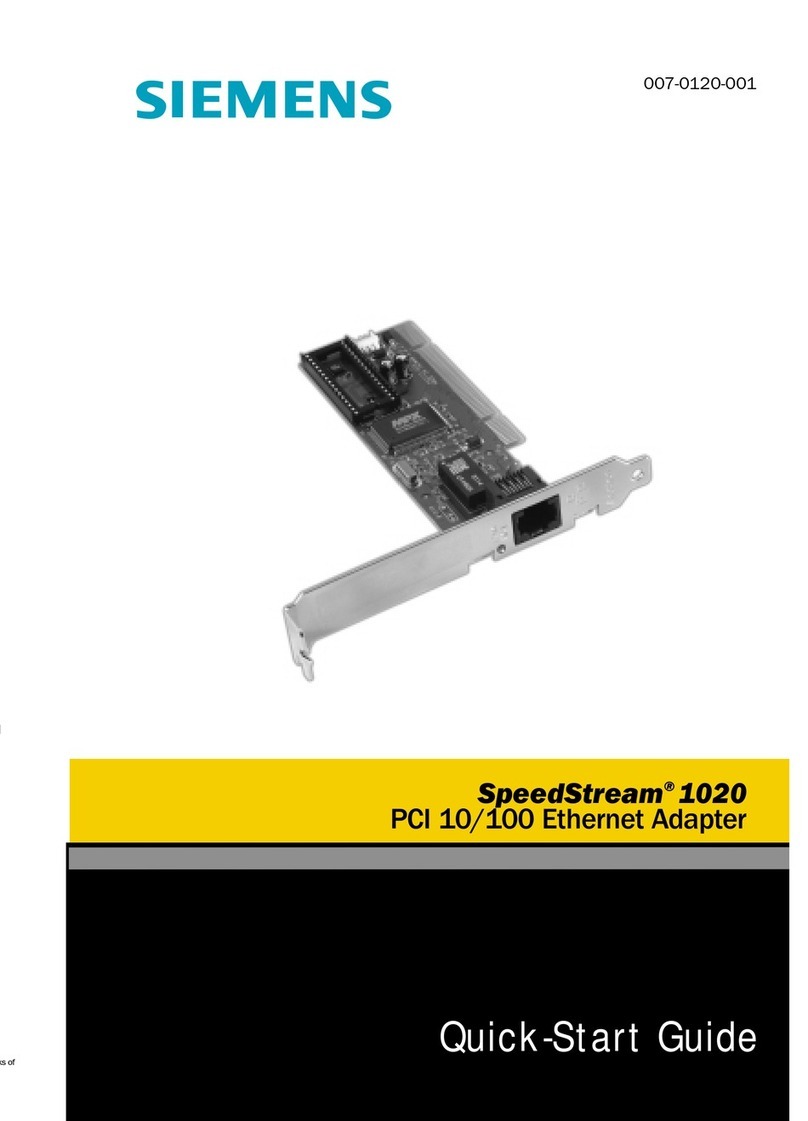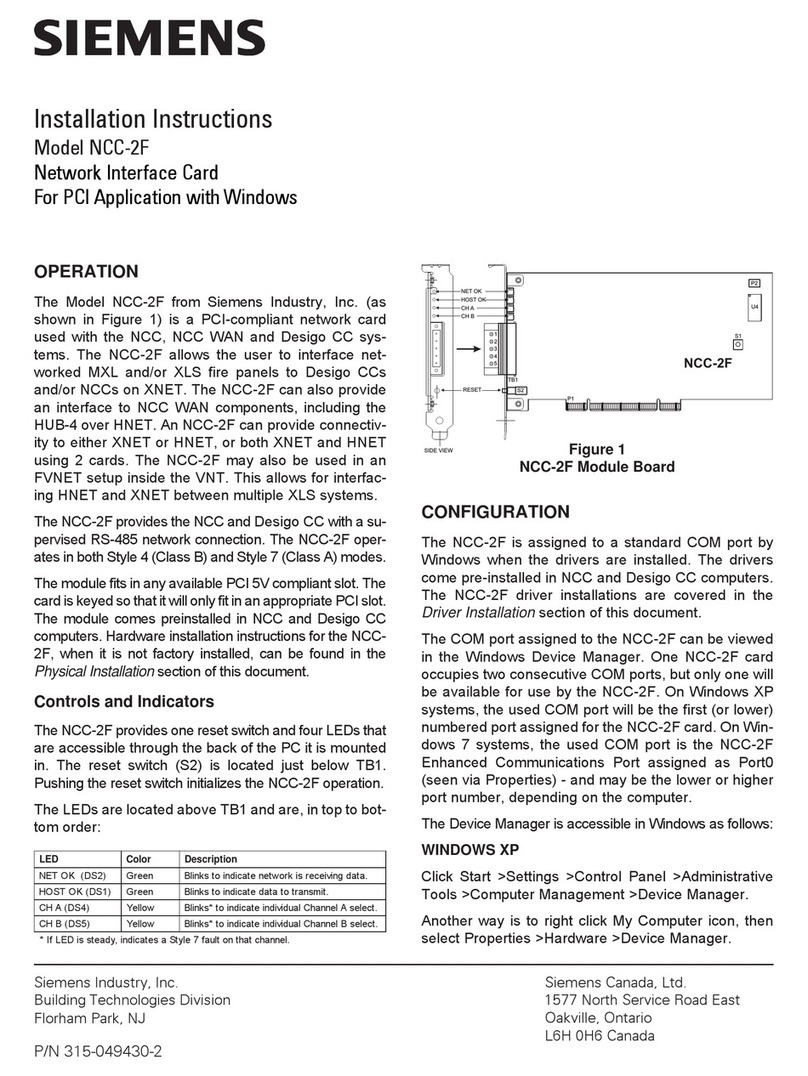
Siemens Industry, Inc.
Building Technologies Division
P/N 315-034200-92
Any or all of the CDC-4 circuits may be programmed to operate with Alarm Verifica-
tion. This allows the automatic verification of alarm conditions caused by smoke
detectors in order to prevent nuisance alarms. For further information, refer to the
FireFinder-XLS Manual, P/N 315-033744.
When upgrading the firmware in the CDC-4, be sure to check the PC board version.
Version 2.0 and above firmware are only compatible with PC board P/N 580-034888.
If version 2.0 or above firmware is uploaded into the older version of the CDC-4, the
PMI/PMI-2/PMI-3 displays “ROM SW Version Error”. The PC board revision number is
printed on the back of the CDC-4 board.
Controls and Indicators The front panel of the CDC-4 contains one reset switch, sixteen LEDs, and three
HNET address switches as shown in Figure 1.
A reset switch is located on the top of the front panel. Pushing the reset switch re-
initializes the CDC-4 operation (similar to a cold boot).
The LEDs follow the reset switch and their functions are defined as follows:
POWER (Green) Normally ON. When illuminated, indi-
cates that power for the CDC-4 is applied
to the card.
CARD FAIL (Yellow) Normally OFF. When illuminated, indi-
cates that the card microprocessor has
failed.
HNET FAIL (Yellow) Normally OFF. When illuminated, indi-
cates that the HNET communication with
the CDC-4 has terminated and the card
goes into degrade mode (applicable only
when card resides in the HNET network).
GND FAULT (Yellow) Normally OFF. When illuminated, indi-
cates that the CDC-4 has detected either
a negative or positive ground fault.
ZONE 1 ALARM (Red) Normally OFF. When illuminated indi-
cates that an alarm condition has been
detected in Zone 1. It will stay on
continuously until the system is reset.
ZONE 1 TROUBLE (Yellow) Normally OFF. When illuminated, indicates
that a trouble condition has been de-
tected in Zone 1. It will stay on continu-
ously until the condition is cleared.
ZONE 1 CLASS A OPEN (Yellow) Normally OFF. When illuminated, indi-
cates that there is a break in the Class A
wiring in Zone 1.
ZONE 2 ALARM (Red) Normally OFF. When illuminated indi-
cates that an alarm condition has been
detected in Zone 2. It will stay on
continuously until the system is reset.





























